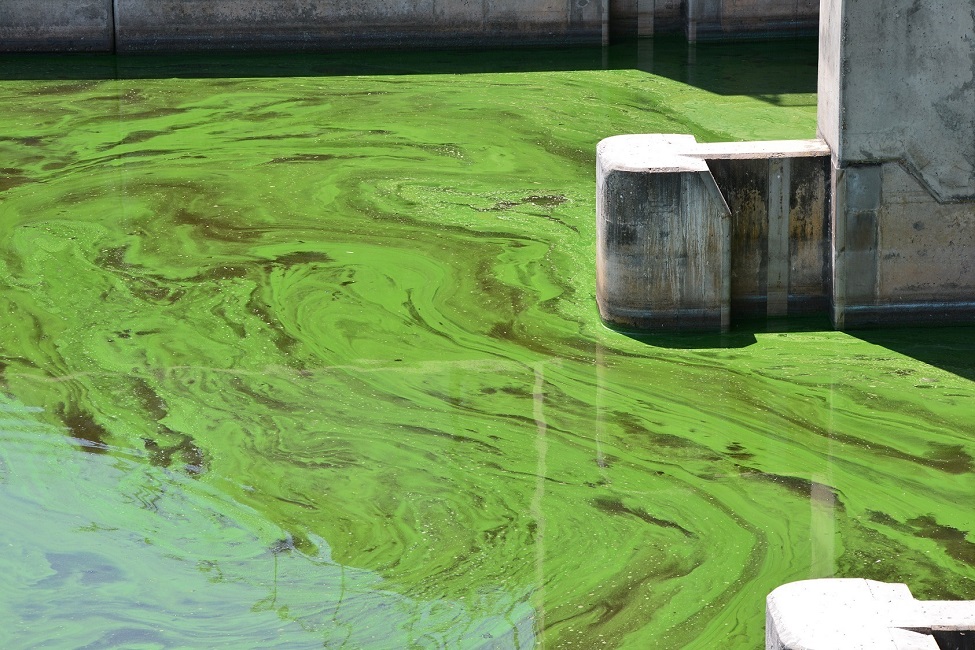FAU Seeks Participants for Study on Effects of Harmful Algal Blooms

During harmful algal blooms, species of cyanobacteria release a variety of toxic compounds including microcystins, a potent toxin, into local waterways. Human exposure comes from ingestion, direct skin contact or inhalation, and can lead to a variety of symptoms ranging from gastroenteritis, nausea, allergic reactions and skin rashes to liver damage in severe cases. Despite numerous occurrences of red tide and blue green algae in Florida waters, our understanding of the long-term health effects of exposure to these blooms remains limited.
Researchers from Florida Atlantic University’s Christine E. Lynn College of Nursing and Harbor Branch Oceanographic Institute are currently seeking participants for a study evaluating potential impacts of exposure to harmful algal blooms. With another grant from the Florida Department of Health (FDOH), they will continue a first-of-its-kind evaluation of both the short-term and potential long-term health effects among Florida residents. The “Long-term Effects of Exposure to Harmful Algal Blooms” (LEE-HABs) study uses a collaborative, multisite approach which includes researchers from Florida Gulf Coast University.
The research team currently has an active cohort of 150 participants and they are recruiting 30 additional participants this year (2022-23). They will be recruiting and collecting non-bloom data for the Stuart area, at 417 S.E. Balboa Ave., on Oct. 17 (10 a.m. to 3 p.m.) and Oct. 18 (9 a.m. to 2 p.m.). Appointments are available and walk-ins are welcome.
This latest study expands upon prior studies conducted in 2016, 2018 and previous FDOH studies from 2019 to 2020 and 2021 to 2022.
“We have very little data on human exposure to these blooms despite the prevalence and intensity cyanobacterial blooms in South Florida,” said Shirley Gordon, Ph.D., principal investigator and a professor in the Christine E. Lynn College of Nursing. “Understanding short- and long-term health impacts is crucial to protecting Floridians’ health. By developing tools to measure concentrations of harmful algal blooms toxins in the environment and multiple human tissues we will gain a better understanding of this ongoing issue in Florida and elsewhere.”
The study also is the first to evaluate the potential effect of exposure to COVID-19. Researchers are exploring if there is a relationship between a history of being infected with COVID-19 and susceptibility to the effects of harmful algal blooms exposure.
The latest study involves a survey to identify the potential routes, duration and types of exposure to blooms through recreational and occupational activities. Researchers also will assess potential effects on individuals with pre-existing conditions such as asthma and chronic gastrointestinal disorders. Bloodwork including liver enzymes and renal markers will also be included in this study.
Algal toxin concentrations including microcystin and brevotoxin will be measured in blood, urine and nasal mucosa. The toxin levels also will be used to understand the dose-response relationships with self-reported respiratory, dermal and gastrointestinal symptoms. Urine and blood analyses will be conducted in collaboration with the United States Centers for Disease Control and Prevention, which is developing methodology to detect emerging algal toxins in human tissues.
The study includes conducting environmental sampling of water and air to measure potential sources of exposure.
Researchers have developed a bio-repository and participant registry to store the data and samples in collaboration with FAU’s Clinical Research Unit within the FAU Division of Research . The purpose is to build an ongoing infrastructure to support the team’s long-term studies on the health effects of exposure to current and emerging harmful algal blooms toxins and serve as a resource for researchers around the state.
Malcolm McFarland, Ph.D., a research associate at FAU Harbor Branch, is co-principal investigator of the study. The research team also includes Kathi Harvey, Ph.D., a nurse practitioner and an assistant professor in the Christine E. Lynn College of Nursing; and Michael Parsons, Ph.D., co-investigator and a professor of marine science at Florida Gulf Coast University.
For more information or to participate in the study, call or text 561-297-4631, or email Gordon at NurHAB@health.fau.edu. Community participants will receive $25 in gift cards as an incentive for participating in data collection activities each year.
-FAU-
Latest News Desk
- After Cancer: Study Explores Caring-Healing Modalities for SurvivorsResearch from FAU's Christine E. Lynn College of Nursing highlights how caring-healing methods like mindfulness can ease distress and build resilience in cancer survivors.
- FAU Researchers 'Zoom' in for an Ultra-Magnified Peek at Shark SkinWhat gives shark skin its toughness and sleek glide? Tiny, tooth-like denticles. Researchers used electron microscopy to reveal how these structures shift with age, sex, and function in bonnethead sharks.
- FAU Receives $1.6M Gift for Student Entrepreneur ScholarshipsFlorida Atlantic University received a $1.6 million gift from long-time Boca Raton resident Bob Schattner, which will be used to continue providing scholarships that he established 15 years ago in perpetuity.
- FAU Lands $3M Federal Grant to Prevent Substance Use in At-risk Youth"Rising Strong" will support more than 3,000 South Florida youth with trauma-informed, evidence-based prevention, empowering vulnerable populations to build resilience and choose substance-free futures.
- FAU Research: Logistics Expansion Slows as Transportation Prices DropThe Logistics Managers' Index had the lowest overall reading since March as the supply chain reacts to economic uncertainty, according to researchers from Florida Atlantic University and four other schools.
- World's First Bench-to-Bedside MRI, Focused Ultrasound System UnveiledThe newly expanded FAU NeuroInnovate Center is the first in the world to integrate advanced MRI and focused ultrasound technologies into a single, unified platform for both preclinical and clinical research.






